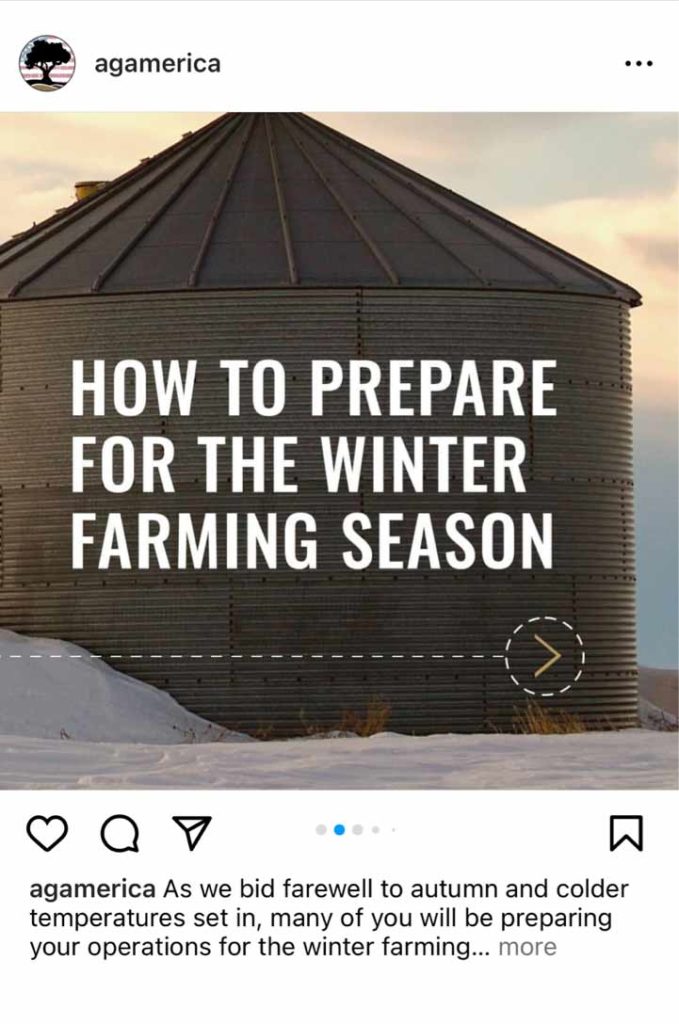How to Prepare for the Winter Farming Season
Winter is here, and now is the perfect time to prepare your farm for the busy seasons ahead.
For many, winter is often a time to slow down, celebrate the holidays, and spend time with loved ones. For farmers, winter is also a time to reassess and prepare. Farm preparation in the winter, such as equipment repairs and soil management, is key in setting yourself up for success in the coming year.
“About 50 percent of the net profitability of farms and ranches in North Dakota, and I will go as far to say the Midwest, occurs in the winter months, based upon the decisions they make.”
While the planting and harvest seasons may receive the most attention, the preparation during the winter months can make all the difference.
To help you with your farm preparations, here are five action items you can complete during the winter farming season.
Five Ways to Prepare Your Farm During the Winter Season

1. Review and Assess Your Operation’s Finances
The winter season is the perfect time to strategize your operational finances for the next year to ensure you’re meeting your goals.
One of the most important ways to set yourself up for financial success is to prepare for tax season by ensuring you have all documents in order and have found ways to minimize your tax burden. Another wise idea is to examine your cash flow budget to ensure your expenses align with your yearly budget. If they do not, now would be a good time to adjust your budget to ensure optimal cash flow and revenue. Pre-buying inputs for next year can help you save money and know your input costs in advance.
For farm families, examining your family living expenses and setting a budget for next year is also important to make sure you are meeting your personal and operational goals.
To get started, AgAmerica’s Financial Health Check tool is a streamlined way to analyze various components of your financial health.
2. Examine Market Prices and Trends
Winter is a good time to take a look at current prices, trends, and projections in the ag industry. Some questions to examine include:
- How much are input costs expected to increase next year?
- What will commodity prices look like next year?
- What legislation is on the table that could impact my operation?
- How much will farm labor cost next year?
Another good way to stay up to date on the industry is to talk to other farmers. Find out what they’re doing on their operations and determine if it could be beneficial to yours.
3. Perform Maintenance on Machinery
During the harvest and planting seasons, it can be difficult to find time to conduct maintenance on your farm machinery. But when these seasons roll around, it will be critical to have combines and planters running at optimal efficiency.
Winter is a prime time for conducting routine preventative maintenance on your tractors and equipment to ensure they run smoothly in the busy year ahead. If your equipment is damaged, you may want to consider purchasing new or used farm equipment, depending on cost and availability.
In addition to repairing farm machinery, it could also be a good time to repair barns and other structures essential to your operation.
“My family’s farm was homesteaded in 1912 and passed down through the family since then. In order to keep small family farms like ours alive, I’m understanding that with a lot of stuff that’s been happening lately, what we do during the winter season is more important than ever.”
4. Ensure Livestock Are Prepared for Cold Temperatures
In many parts of the country, temperatures can dip below freezing, so it’s important to ensure livestock have a warm, dry, and safe place to live in the winter. It is especially important for calves to maintain their body temperature to protect proper growth and development. According to Kim Clark, Dairy Extension Educator at the University of Nebraska-Lincoln, here are some ways to make sure your livestock stay safe during the harsh winter months:
- Ensure calf hutches are facing away from the wind;
- House animals inside a barn for shelter if possible;
- Provide warm and dry bedding for animals; and
- Make sure you have enough feed supply.
In addition to making sure your animals are prepared for the winter ahead, it’s also a good time to ensure they are up to date on their vaccinations and other preventative health measures.
5. Grow Winter Cover Crops
Farming in cold climates can also mean caring for cold climate crops. Winter farming crops include broad beans, asparagus, peas and pea shoots, garlic, spinach, onions, winter lettuce, and more depending on your location. Some farmers grow broccoli and radishes during the winter months as they tend to thrive in chilly temperatures, along with crops like brussels sprouts, Swiss chard, cauliflower, and kale. If you are new to winter farming, you can always reach out to your local cooperative extension office to learn more about planting dates and schedule in your grow zone.
In addition to planting cold climate crops, cover crops are a good way to protect your soil from erosion over the winter months. According to Oregon State University, benefits of winter cover crops include:
- Supplying nitrogen;
- Reducing weeds;
- Providing nectar and pollen for beneficial insects; and
- Managing soil-borne diseases.
Types of winter cover crops include:
- Clovers;
- Legumes;
- Mustard;
- Grass species;
- Barley; and
- Oats.
While each cover crop yields unique benefits, cover crops have positive impacts on the environment including reducing the need for fertilizer and sequestering carbon.
Assess Your Financing Needs During the Winter Farming Season
During the harvest season, it can be challenging to find the time to take a step back and analyze your operational finances. While there’s always work to be done on the farm, using the winter season to prepare your operation both financially and physically for the busy season ahead is a key part of a successful harvest.
Contact us today to learn how AgAmerica can help you create a financial roadmap and ensure your operation is set up for financial success.






